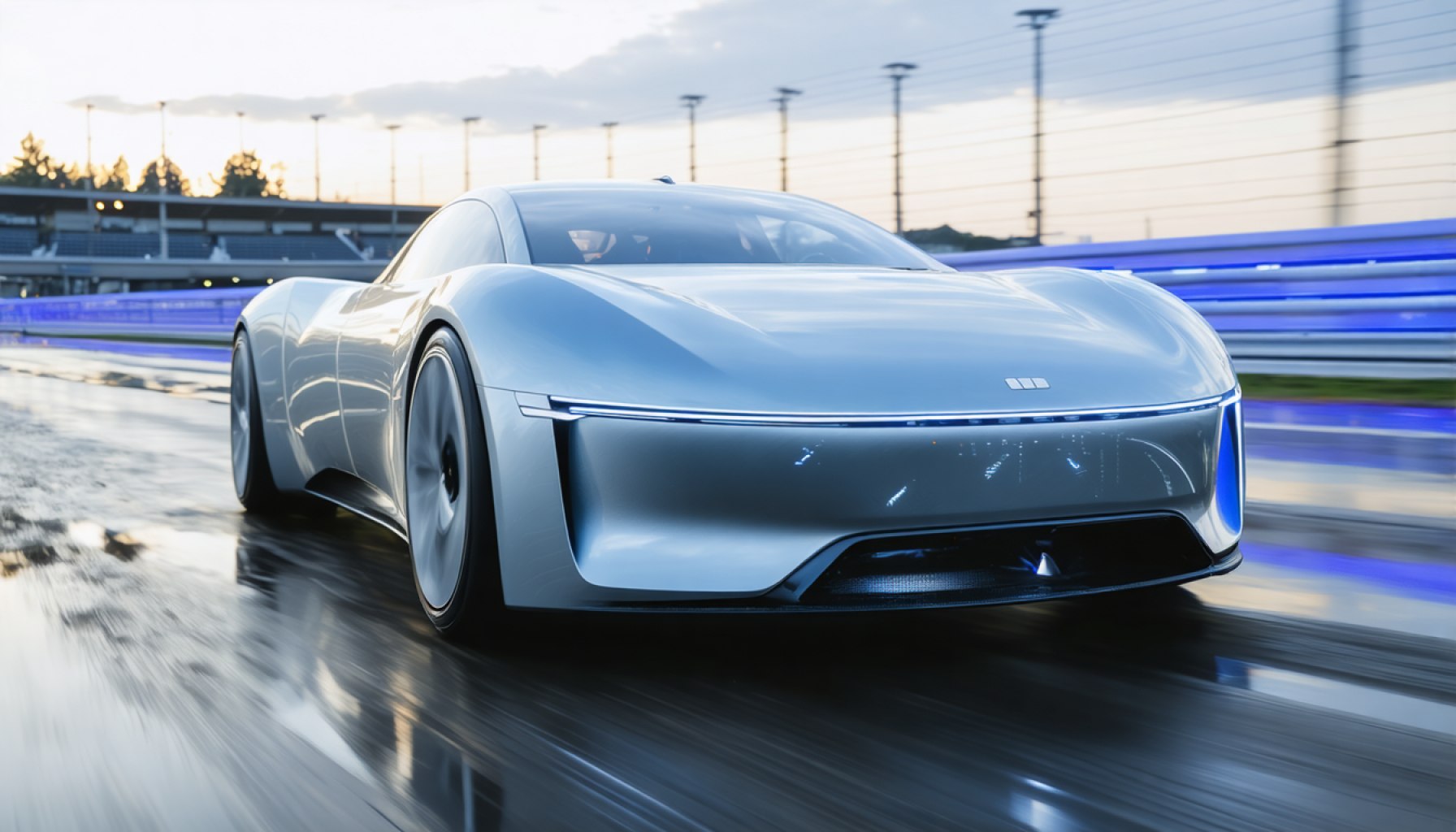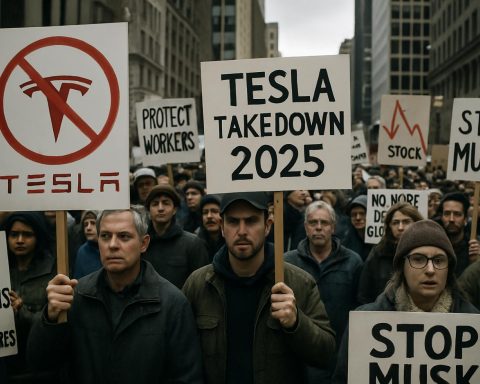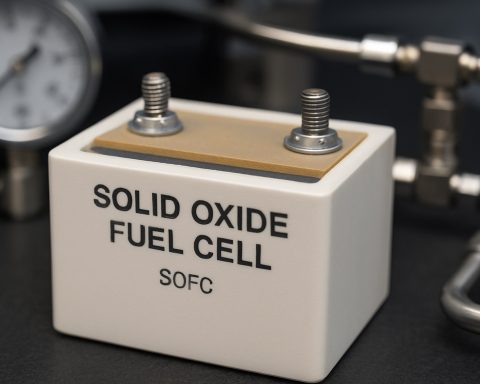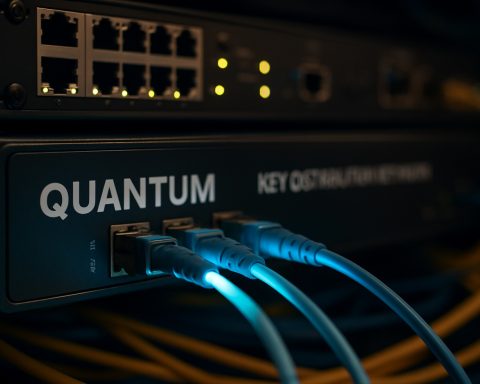- Samsung has unveiled a solid-state battery featuring a silver-carbon composite anode, promising to revolutionize electric vehicle (EV) performance.
- The new battery offers impressive capabilities, such as a 600-mile range on a single charge and 80% recharge in nine minutes.
- A lifespan of up to 20 years and energy density of 500 Wh/kg highlight its potential to outshine traditional lithium-ion batteries.
- This technology could drive significant demand for silver, using around a kilogram per 100 kWh battery, affecting global markets.
- High-powered chargers and more affordable EV options are challenges to be addressed for widespread adoption.
- Samsung plans to expand its offerings to include cost-effective versions by 2026, aiming for broader EV accessibility.
- The use of silver in this context is poised to catalyze transformation in both EV technology and market dynamics.
A glimmer of silver is poised to shake up the electric vehicle (EV) industry—quite literally. Samsung’s groundbreaking solid-state battery has positioned silver at the heart of innovation, promising to transform EV performance standards while influencing global silver markets. This shiny metal might just be the secret ingredient that powers a revolution in how we travel.
Unveiled with much fanfare at the SNE Battery Day 2024 in Seoul, Samsung’s new battery boasts dazzling capabilities. Imagine speeding through a 600-mile journey on a single charge, or rejuvenating your vehicle’s power to 80% in the span of just nine minutes. Add to this a lifespan potentially stretching two decades, and it becomes clear why this technology steals the spotlight from everyday lithium-ion batteries. The secret? A transformative oxide solid-state design fortified by a silver-carbon (Ag-C) composite anode.
This anode constitutes the heart of the new battery, where silver’s role is not merely aesthetic. Contributing to the battery’s stability and efficiency, the use of silver allows for thinner designs, which deliver a significantly lighter battery with an impressive energy density of 500 Wh/kg. This is a stunning leap from the current mainstream energy densities, making it possible not just to drive further and charge faster, but to do so with a more compact battery.
Peek inside one of these technological wonders and you’ll find that a typical 100 kWh battery pack relies on roughly a kilogram of silver. If this technological marvel were to capture just 20% of global car production—around 16 million vehicles—an estimated 16,000 metric tons of silver would be needed annually. Picture the silver market bustling with these demands, the potential scarcity sending ripples that attract both innovators and investors alike.
But silver’s appeal reaches beyond its metal sheen. It’s a catalyst for broader change, influencing the design and future of EV infrastructure. High-powered chargers, capable of realizing that nine-minute charging promise, are still catching up, and scaling this technology to affordable car tiers remains a hurdle. However, the glint of possibility is undeniable.
While Samsung’s feat dazzles in the realm of “super premium” EVs, its ambitions don’t stop there. Plans to roll out more wallet-friendly versions leveraging advancements in lithium iron phosphate and cobalt-free batteries are underway. By 2026, Samsung envisions these rapid-charging powerhouses being accessible to the everyday driver, marking 2024 as just a teaser of what’s to come.
Thus, it’s more than just an advance in battery technology. This is a reshaping of the EV landscape, with silver—the precious metal once largely confined to coins and jewelry—poised at the helm of transportation’s next chapter. The shiny backbone of this new battery world, silver isn’t just ornamenting change; it’s driving it. As technology ignites and markets adjust, the implications stretch into realms both ecological and economic, hinting at a future where our rides are not only savvy but sustainable.
The Silver Lining: How Samsung’s Solid-State Battery Revolutionizes the EV Industry
Understanding Samsung’s Revolutionary Solid-State Battery
Samsung is setting the stage for a remarkable shift in the electric vehicle (EV) industry with its innovative solid-state battery. The unveiling of this technology, featuring a silver-carbon (Ag-C) composite anode, promises to redefine performance standards, pushing both engineering and environmental boundaries.
Key Features and Capabilities:
– Extended Range and Fast Charging: The battery allows EVs to travel up to 600 miles on a single charge. Moreover, it recharges to 80% in just nine minutes, addressing two of the most persistent challenges faced by EV users: range anxiety and long charging times.
– Long-Lasting Battery Life: Boasting a potential lifespan of 20 years, this is more than double what most current lithium-ion batteries offer, representing significant long-term savings for consumers.
– Compact and Efficient Design: The 500 Wh/kg energy density enables lighter, more compact batteries without compromising energy output, making it a standout in terms of both efficiency and form.
How-To Steps & Real-World Use Cases
Integration Steps for EV Manufacturers:
1. Adopt New Anode Technology: Collaborate with Samsung to integrate the Ag-C composite anode into new EV models.
2. Re-engineer Vehicle Designs: Adapt vehicle designs to accommodate the leaner battery profiles made possible by this new technology.
3. Enhance High-Power Charging Infrastructure: Work with charging network providers to deploy chargers that can handle rapid, high-capacity battery recharging.
Industry Trends and Market Forecasts
The introduction of this solid-state battery technology is poised to catalyze significant changes in global silver markets.
Market Implications:
– Increased Demand for Silver: If Samsung captures 20% of global car production with its new battery, approximately 16,000 metric tons of silver will be required annually. This could lead to a significant surge in silver prices and demand.
– Growth in EV Adoption: Enhanced battery life and performance may fuel further growth in EV adoption, thereby supporting efforts to reduce emissions and foster sustainability.
Reviews & Comparisons
Comparison with Lithium-Ion Batteries:
– Energy Density: Solid-state batteries offer a drastically higher energy density at 500 Wh/kg compared to the 250-300 Wh/kg typical of lithium-ion batteries.
– Safety and Stability: The solid-state design reduces risks of overheating and failure, noted as critical challenges with current battery technologies.
Pros & Cons Overview
Pros:
– Exceptional range and charging speed
– Long lifespan, promising reduced waste and lower lifecycle costs
– Enhanced safety profile due to solid-state composition
Cons:
– Initial costs and scalability challenges for widespread implementation
– Current infrastructure needs upgrading to fully exploit rapid-charging capabilities
Insider Insights and Predictions
Experts predict that Samsung’s battery could drive the next wave of EV innovation, encouraging other manufacturers to explore solid-state technologies. The increased demand for silver might also impact other industries relying on this precious metal.
Actionable Recommendations:
1. Invest in Silver Futures: Given the projected increase in demand, consider silver investments.
2. Foster Partnerships: EV manufacturers should seek partnerships with tech leaders to stay ahead in the battery technology race.
3. Upgrade Infrastructure: Policy makers and businesses must focus on charging infrastructure enhancements to support this new technology.
For more information about Samsung’s broader innovations, visit Samsung.
In essence, as Samsung’s solid-state batteries prepare to redefine EV standards, they underscore silver’s newfound strategic significance. This technological advancement not only invites us to rethink our travel choices but also challenges us to adapt our markets and infrastructure to accommodate the future’s electrified promise.











